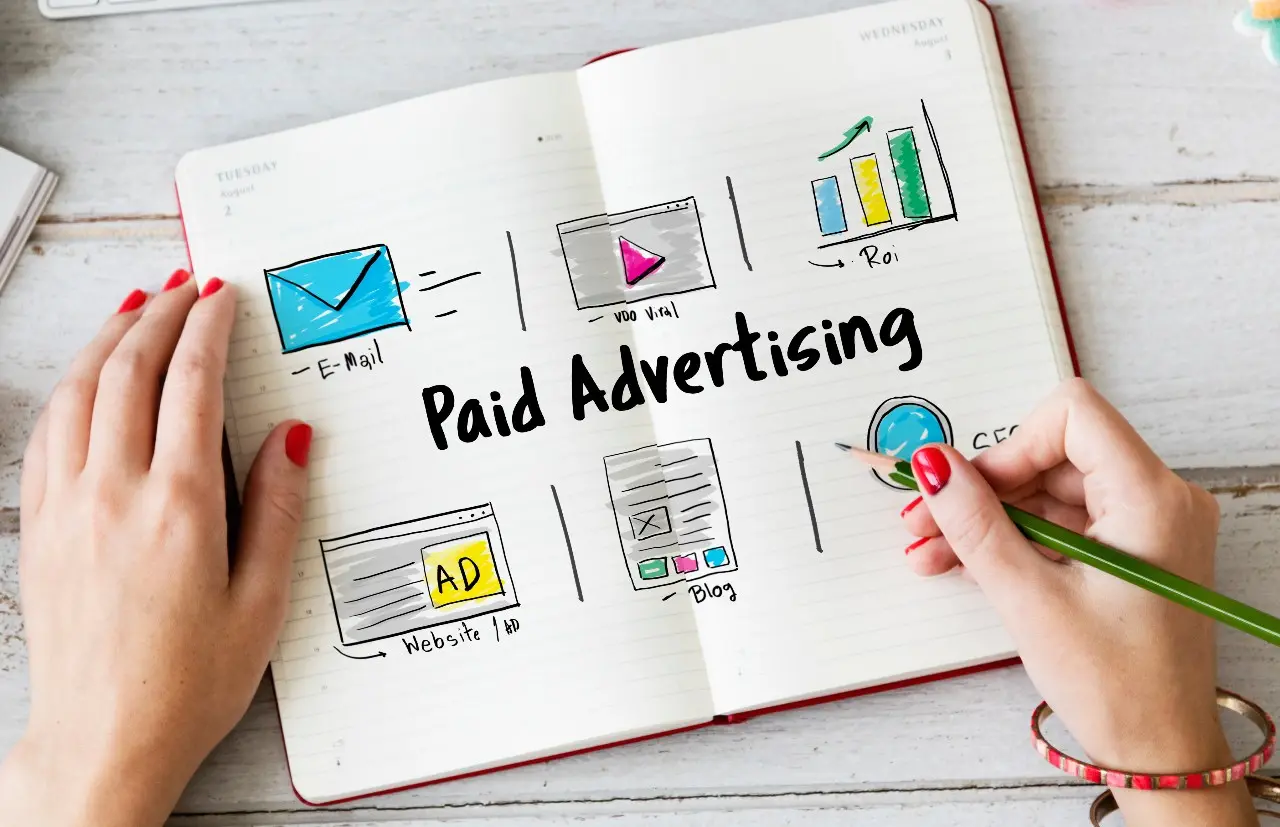Listen to article
The Rise of Short-Form in Email, Video, and Blog Formats
In a world saturated with information, capturing and holding the attention of B2B buyers has become increasingly challenging. So what type of content do B2B buyers want?
The answer lies in conciseness. Short-form content statistics show that B2B buyers are showing a clear preference for easily digestible formats. From bite-sized blog posts to engaging short videos and targeted email marketing, businesses are adapting to the demands of their audience.
But what kind of short-form content is the most effective? What platforms are ideal for distribution? And how can you leverage tools like AI to streamline content creation?
In this article, we’ll explore the latest short-form content trends, offering valuable statistics and actionable tips to help you create a content strategy that resonates with today’s B2B buyers.
The Shift to Bite-Sized Content in B2B Marketing
Attention spans may not be shrinking, but they are certainly more selective, especially in the B2B landscape. Decision-makers are inundated with information daily, and content that gets straight to the point stands out. This growing inclination toward short-form formats isn’t just a passing trend—it’s a response to how professionals consume, process, and act on information in today’s high-speed digital environment.
- 65% of B2B buyers consider short-form content, such as blog posts and infographics, the most engaging. Source
- A separate study aligns with this, finding that 65% of B2B buyers prefer easily digestible, shorter content formats. Source
Delivering value quickly is no longer optional in B2B marketing—it’s expected. While in-depth resources still have their place in decision-making, short-form content serves as a gateway to capture interest and guide buyers down the funnel. The secret is to make every sentence count by addressing pain points or providing actionable insights in the most digestible way possible.
Pro Tip:
Create a strategic mix of short-form and long-form assets. Use concise content like infographics or 90-second videos to grab attention, then direct your audience to a deeper dive with detailed whitepapers or webinars. Tools like Canva or Piktochart can help you quickly design professional, engaging short-form visuals that get noticed.
Driving Results with Short-Form Email Marketing Strategies
In the fast-transitioning digital landscape, email has solidified itself as a cornerstone of B2B marketing strategies—especially when it comes to distributing impactful short-form content. Its adaptability for personalized messaging and automation makes it invaluable for nurturing leads and fostering lasting customer relationships. As inboxes become increasingly crowded, leveraging the power of concise, value-driven email content is no longer just effective—it’s essential for staying ahead of competitors.
- Email newsletters remain a core strategy, with 77% of B2B companies and agencies incorporating them into their content marketing plans. Source
- Email is the top choice for B2B buyers, as 77% prefer it as their communication method. Source
- Email newsletters are a key tool for 73% of marketers in their content marketing efforts. Source
- Email automation is widely adopted, with 82% of marketers using it, resulting in an 8x increase in email open rates. Source
- Email is B2B marketers’ most successful channel for distributing content, as reported by approximately 79% of B2B marketing companies and agencies in 2023. Source
- 93% of content marketers use email as a channel to distribute content for marketing purposes. Source
- Email newsletters are the primary form of content marketing for 81% of B2B marketers. Source
Email marketing’s unrivaled ability to maintain relevance in an ever-changing digital ecosystem lies in its versatility and measurable impact on customer engagement. From B2B buyers’ clear preference for email communication to the growing reliance on automation tools, these trends highlight the need to refine your email strategy. Looking to drive better results? Shift focus from sending generic emails to creating hyper-focused campaigns that prioritize your audience’s specific needs.
Pro Tip:
Take your email game to the next level by experimenting with shorter subject lines and incorporating interactive elements like polls or GIFs to capture attention. Additionally, test the timing of your sends for maximum impact—emails sent midweek or during off-peak hours often outperform others in open rates.
How Short-Form Video is Reshaping Marketing Success
In a world where attention spans are shrinking and competition for engagement is at an all-time high, short-form video has emerged as a go-to strategy for brands looking to capture their audience’s interest quickly and effectively. With its ability to deliver messages in bite-sized, visually engaging formats, short-form video is driving not only consumer engagement but also tangible results like sales and brand awareness. Whether you’re a B2C brand tapping into viral trends or a B2B company using explainer videos to educate decision-makers, the numbers make it clear: video is no longer a luxury in your marketing toolbox—it’s a necessity.
- 91% of businesses actively use video as a marketing tool, solidifying its role as a cornerstone of modern marketing. Source
- 86% of companies have integrated video into their marketing strategies, showcasing its near-ubiquitous adoption. Source
- In 2023, online video represented 82.5% of all web traffic, further emphasizing its dominance in digital consumption. Source
- When delivered via video, 95% of a message is retained by viewers, compared to only 10% when consumed through text. Source
- Nearly 87% of marketers attribute a direct boost in sales to video content, underscoring its ROI potential. Source
- 90% of marketers report that video has positively increased brand awareness, making it a powerful tool for visibility. Source
- Social media posts with video content gain 48% more views and 1,200% more shares than posts without video, highlighting the format’s unmatched engagement power. Source
- Shorter videos (under 60 seconds) achieve a 62% retention rate, outperforming the average video retention rate of 54%. Source
- B2B marketers are leveraging video types like testimonials and explainers to drive trust and understanding among potential clients. Source
The data doesn’t just highlight the popularity of video—it proves its effectiveness. Short-form videos, in particular, cater to the modern consumer’s preference for concise, impactful communication. Whether you’re driving ecommerce sales, increasing social media engagement, or informing complex B2B audiences, short-form video offers a scalable, versatile solution to meet your goals. To maximize success, businesses should focus on crafting videos that are visually compelling, easy to digest, and optimized for mobile-first consumption.
Pro Tip:
Experiment with different formats like social media reels, testimonials, or quick how-to clips to see what resonates with your audience. Keep messaging direct and actionable, and don’t forget to include captions for silent playback and accessibility. Tools like Canva, Animoto, and InVideo can help you create professional-quality videos quickly, even without prior editing experience.
Tailoring Short-Form Video to Platform-Specific Audiences
Crafting a one-size-fits-all video strategy is no longer enough to capture the attention of today’s diverse, fast-scrolling audiences. Each social platform comes with its unique viewer preferences, engagement peaks, and content formats. Aligning your short-form video strategy with these platform-specific nuances is key to driving higher shares, longer watch times, and better results for your campaigns.
- On Facebook, videos that are 2 to 5 minutes long tend to generate the highest engagement. Source
- LinkedIn users are 20 times more likely to share a video than any other type of post, highlighting the platform’s affinity for video. Source
- Videos designed for silent playback on LinkedIn are 70% more likely to be watched all the way through, making captions and visual storytelling essential. Source
- 48% of marketers plan to incorporate YouTube into their strategy within the next year, showcasing its growing relevance. Source
- 46% of marketers aim to include Facebook videos in their strategies in the upcoming year, reflecting its continued influence. Source
When it comes to short-form video, the “rules of engagement” vary wildly between platforms—what works on Facebook may flop on LinkedIn or YouTube. Success lies in paying close attention to platform-specific behavior: leverage LinkedIn’s preference for professional yet silent-friendly content, capitalize on Facebook’s love for short, engaging storytelling, and explore YouTube’s potential for both informational and highly shareable content. Adaptability is the backbone of a high-performing video strategy.
Pro Tip:
Don’t just stop at length and format—analyze platform analytics regularly to see what’s resonating with your audience. Metrics like average watch time and click-through rates will help refine your strategy for each platform, ensuring your content always stays relevant and impactful.
If you’re looking to go beyond just video and adopt a well-rounded approach to your digital efforts, consider exploring full-service marketing to elevate your strategy across multiple channels.
Blogging and Infographics: Complementary Short-Form Strategies
While blogs have been a staple of content marketing for years, they continue to evolve, often incorporating short-form elements. Infographics, another form of visual content, also play a role in engaging audiences.
- Blogging consistently leads to more leads, as B2B companies that blog regularly generate 67% more leads each month compared to those that don’t. Source
- Blogs remain a fundamental part of content strategies, with 90% of content marketers using them. Source
- However, readers often skim content, with 43% admitting to skimming blog posts. Source
- Email, social media and blog posts are top channels for distributing content, with 79% of B2B marketers using blog posts. Source
- Infographics are a preferred content format among over 50% of B2B marketers, along with videos. Source
- Buyers are less willing to exchange information for infographics, as only 24% are willing to do so. Source
Blogging remains a key component of content marketing, driving lead generation and supporting broader content distribution efforts. Combining short-form content formats like infographics within blog posts is an effective way to cater to skimming readers and enhance engagement. When looking to optimize these strategies, it’s worth considering how a B2B website strategy can complement your content efforts by aligning them with overall business goals.
How AI is Transforming the Creation of Short-Form Content
In the fast-paced world of marketing, the ability to create high-quality short-form content quickly is no longer a luxury—it’s a necessity. AI tools are revolutionizing the way marketers approach this challenge by automating time-intensive tasks and providing creative inspiration. Instead of struggling with tight deadlines or the dreaded creative block, businesses can now produce engaging content at scale, aligning with the increasing demand for bite-sized blogs, social media updates, and micro-articles.
- Marketers are turning to AI to generate blog posts (58%), social media posts (55%), and short articles (49%). Source
- The top advantages of AI-driven content creation include faster delivery times and solutions for overcoming writer’s block. Source
The growing adoption of AI in content creation is reshaping marketing workflows, enabling brands to stay agile in an increasingly competitive landscape. By freeing up creative teams to focus on strategy and storytelling, AI doesn’t just save time—it creates new opportunities for deeper audience engagement.
Pro Tip:
Take your AI-powered content creation further by experimenting with tools that offer advanced personalization and SEO-driven recommendations. Platforms with built-in analytics can also help you refine your strategy, ensuring every post resonates with your target audience.
Conclusion
The rise of short-form content is reshaping the marketing landscape, offering businesses a powerful way to connect with audiences who crave concise, impactful messaging. From the dominance of email as a distribution channel to the unparalleled engagement rates of short-form videos, the data speaks volumes: brevity is no longer just a preference—it’s a necessity. Blogs and infographics continue to hold their ground as vital tools, adapting to the skimming habits of readers and complementing other formats for a well-rounded strategy.
This shift also brings opportunities for innovation, particularly with AI-driven tools accelerating content creation while maintaining quality. Whether you’re crafting a 90-second video, a quick email newsletter, or an eye-catching infographic, the focus should always be on delivering value in a way that aligns with modern consumption habits.
Ready to boost your traffic and grow your website? Your customers are looking for you, and our SEO services can help you be found across search engines. Let’s work together to turn your short-form content strategy into measurable results.
About Creating The Rise of Short-Form in Email, Video, and Blog Formats
This guide was written by the Scopic Studios team and reviewed by Araksya Hakobjanyan, SEO Lead at Scopic Studios.
Scopic Studios delivers exceptional and engaging content rooted in our expertise across marketing and creative services. Our team of talented writers and digital experts excel in transforming intricate concepts into captivating narratives tailored for diverse industries. We’re passionate about crafting content that not only resonates but also drives value across all digital platforms.
Note: This blog’s images are sourced from Freepik.

































































































































































































































































